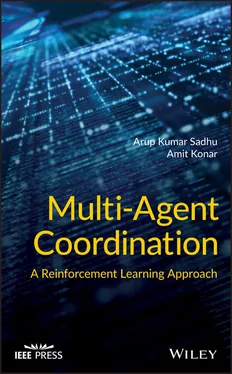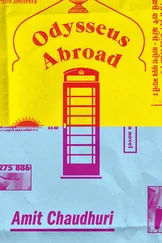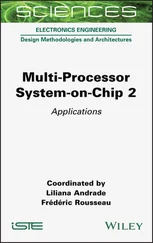3 Chapter 3Figure 3.1 Equilibrium selection in multi‐agent system. (a) Two UE ( ax and b ...Figure 3.2 AAR versus learning epoch for two‐agent system.Figure 3.3 AAR versus learning epoch for three‐agent system.Figure 3.4 Planning path offered by the consensus‐based multi‐agent planning...Figure 3.5 Planning path offered by the Nash Q‐learning‐based planning algor...
4 Chapter 4Figure 4.1 Corner cell, boundary cell, and other cell.Figure 4.2 Feasible joint states for two‐agent systems in stick‐carrying pro...Figure 4.3 Convergence comparison of ΩQL, CΩQL, NQL, FQL, and CQL algorithms...Figure 4.4 Convergence comparison of ΩQL, CΩQL, NQL, FQL, and CQL algorithms...Figure 4.5 Convergence comparison of ΩQL, CΩQL, NQL, FQL, and CQL algorithms...Figure 4.6 (Map 4.1) Planning with box by CQIP, CΩMP, and ΩMP algorithms.Figure 4.7 (Map 4.1) Planning using Khepera‐II mobile robot by CQIP, CΩMP, a...Figure 4.8 (Map 4.2) Planning with stick by CQIP, CΩMP, and ΩMP algorithms....Figure 4.9 (Map 4.2) Path planning using Khepera‐II mobile robot by CQIP, CΩ...Figure 4.10 (Map 4.3) Path planning with triangle employing CQIP, CΩMP, and ...
5 Chapter 5Figure 5.1 Diagram illustrating the calculation of d .Figure 5.2 Evolution of the expected population variance.Figure 5.3 Relative performance in mean best objective function versus funct...Figure 5.4 Relative performance in mean best objective function versus funct...Figure 5.5 Relative performance in mean best objective function versus funct...Figure 5.6 Relative performance in mean best objective function versus funct...Figure 5.7 Relative performance in accuracy versus function evaluation for I...Figure 5.8 Variation of FEs required for convergence to predefined threshold...Figure 5.9 Graphical representation of Bonferroni–Dunn's procedure consideri...Figure 5.10 Initial (a) and final configuration of the world map after execu...Figure 5.11 Average total path traversed versus number of obstacles.Figure 5.12 Average total path deviation versus number of obstacles.Figure 5.13 Average uncovered target distance versus number of steps with nu...Figure 5.14 Final configuration of the world map after experiment using Khep...
1 Cover
2 Table of Contents
3 Begin Reading
1 ii
2 iii
3 iv
4 xi
5 xii
6 xiii
7 xiv
8 xv
9 xvi
10 xvii
11 xviii
12 xix
13 xx
14 xxi
15 xxii
16 1
17 2
18 3
19 4
20 5
21 6
22 7
23 8
24 9
25 10
26 11
27 12
28 13
29 14
30 15
31 16
32 17
33 18
34 19
35 20
36 21
37 22
38 23
39 24
40 25
41 26
42 27
43 28
44 29
45 30
46 31
47 32
48 33
49 34
50 35
51 36
52 37
53 38
54 39
55 40
56 41
57 42
58 43
59 44
60 45
61 46
62 47
63 48
64 49
65 50
66 51
67 52
68 53
69 54
70 55
71 56
72 57
73 58
74 59
75 60
76 61
77 62
78 63
79 64
80 65
81 66
82 67
83 68
84 69
85 70
86 71
87 72
88 73
89 74
90 75
91 76
92 77
93 78
94 79
95 80
96 81
97 82
98 83
99 84
100 85
101 86
102 87
103 88
104 89
105 90
106 91
107 92
108 93
109 94
110 95
111 96
112 97
113 98
114 99
115 100
116 101
117 102
118 103
119 104
120 105
121 106
122 107
123 108
124 109
125 110
126 111
127 112
128 113
129 114
130 115
131 116
132 117
133 118
134 119
135 120
136 121
137 122
138 123
139 124
140 125
141 126
142 127
143 128
144 129
145 130
146 131
147 132
148 133
149 134
150 135
151 136
152 137
153 138
154 139
155 140
156 141
157 142
158 143
159 144
160 145
161 146
162 147
163 148
164 149
165 150
166 151
167 152
168 153
169 154
170 155
171 156
172 157
173 158
174 159
175 160
176 161
177 162
178 163
179 164
180 165
181 166
182 167
183 168
184 169
185 170
186 171
187 172
188 173
189 174
190 175
191 176
192 177
193 178
194 179
195 180
196 181
197 182
198 183
199 184
200 185
201 186
202 187
203 188
204 189
205 190
206 191
207 192
208 193
209 194
210 195
211 196
212 197
213 198
214 199
215 200
216 201
217 202
218 203
219 204
220 205
221 206
222 207
223 208
224 209
225 210
226 211
227 212
228 213
229 214
230 215
231 216
232 217
233 218
234 219
235 220
236 221
237 222
238 223
239 224
240 225
241 226
242 227
243 228
244 229
245 230
246 231
247 233
248 234
249 235
250 236
251 237
252 238
253 239
254 240
255 241
256 242
257 243
258 244
259 245
260 246
261 247
262 248
263 249
264 250
265 251
266 252
267 253
268 254
269 255
270 256
271 257
272 258
273 259
274 260
275 261
276 262
277 263
278 264
279 265
280 266
281 267
282 268
283 269
284 270
285 271
286 272
287 273
288 274
289 275
290 276
291 277
292 278
293 279
294 280
295 281
296 282
297 283
298 285
299 286
300 287
301 288
302 289
303 290
304 291
305 292
306 293
307 294
308 295
309 296
310 297
IEEE Press445 Hoes Lane Piscataway, NJ 08854
IEEE Press Editorial BoardEkram Hossain, Editor in Chief
| Jón Atli Benediktsson |
David Alan Grier |
Elya B. Joffe |
| Xiaoou Li |
Peter Lian |
Andreas Molisch |
| Saeid Nahavandi |
Jeffrey Reed |
Diomidis Spinellis |
| Sarah Spurgeon |
Ahmet Murat Tekalp |
|
Multi‐Agent Coordination
A Reinforcement Learning Approach
Arup Kumar Sadhu
Amit Konar


This edition first published 2021
© 2021 John Wiley & Sons, Inc.
All rights reserved. No part of this publication may be reproduced, stored in a retrieval system, or transmitted, in any form or by any means, electronic, mechanical, photocopying, recording or otherwise, except as permitted by law. Advice on how to obtain permission to reuse material from this title is available at http://www.wiley.com/go/permissions.
Читать дальше














